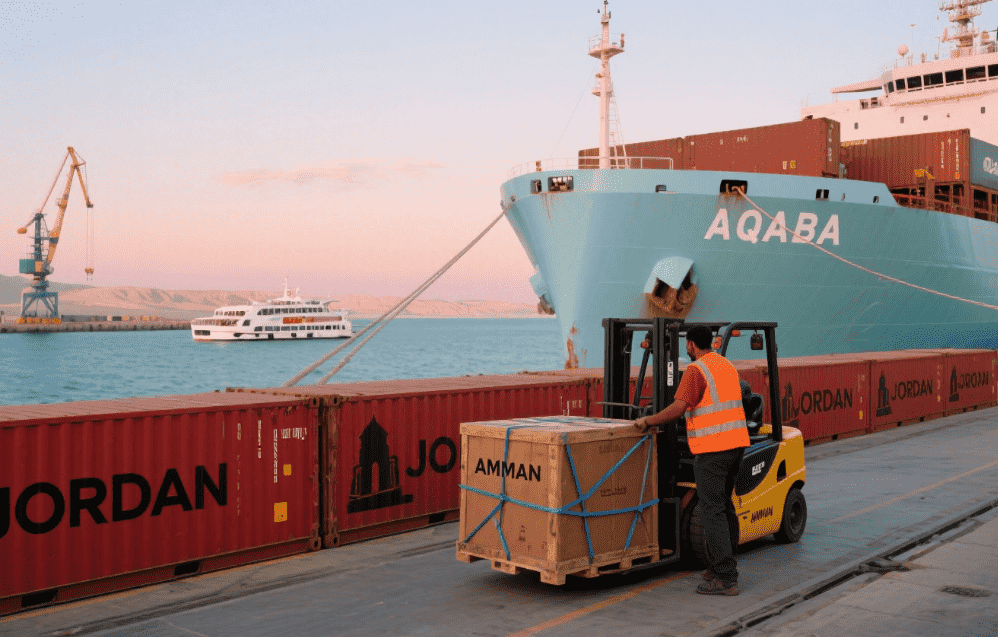
For many Ethiopian entrepreneurs, importing products from China is the most cost-effective way to run a successful business. However, for beginners, the process can be quite complicated.
Without sufficient import and export experience, you may encounter challenges such as long shipping times, high freight rates, unexpected delays, and more.
How to import goods from China to Ethiopia?
Importing goods from China to Ethiopia can be a profitable enterprise if a strategic approach is taken. Here is a comprehensive guide to help you successfully complete the process:
1. Conduct market research
Determine demand: Determine which products are in high demand in Ethiopia. Analyze market trends, consumer preferences, and gaps you can fill.
Understand the competition: Research your competitors to understand their products, pricing, and market positioning.
Regulatory environment: Familiarize yourself with Ethiopian import regulations, tariffs, and any restrictions on certain goods.
2. Find reliable suppliers in China
Online platform: Use Alibaba, Global Sources, Made in China and other platforms to find suppliers.
Trade shows: Attend trade shows such as the Canton Fair to meet suppliers in person and evaluate their products.
Purchasing Agents: Consider hiring a purchasing agent in China who can help identify and vet suppliers.
3. Evaluate and select suppliers
Qualification verification: Check supplier's business license, certification and track record.
Sample Request: Obtain product samples to assess quality before placing a large order.
Factory audits: If possible, conduct or schedule factory inspections to ensure suppliers meet your quality and production standards.
References and reviews: Seek feedback from other buyers to gauge reliability and performance.
4. Negotiate terms and place orders
Price negotiation: Discuss pricing based on order quantity, payment terms and any customization requirements.
Minimum Order Size (MOQ) : Make sure your supplier's MOQ fits your budget and storage capacity.
Payment terms: Common terms include T/T (wire transfer), L/C (letter of credit) or PayPal. Negotiate terms to minimize your financial risk.
Contracts: Draft clear contracts outlining product specifications, payment terms, delivery schedules and quality standards.
5. Arrange transportation and logistics
Select delivery method
Sea freight: Lower cost for bulk shipments, but slower (usually 30-45 days to Ethiopia).
Air: Faster (7-14 days) but more expensive, suitable for smaller or urgent shipments.
Choose a freight forwarder: Work with a well-known freight forwarder who can handle logistics, documentation, and shipping Winsail logistics company will be your best partner.
Incoterms: Understand inCOterms (e.g. FOB, CIF) to clarify liability for shipping costs, insurance and risk transfer.
6. Handle Ethiopian customs and import procedures
Import Licenses and permits: Determine if your product requires a specific license or permit from the Ethiopian authorities.
Duties and taxes: Calculate applicable import duties, VAT and any other taxes. The Ethiopian Customs Commission can provide detailed information.
Documentation: Make sure you have all the necessary documents ready, including:
Commercial invoice
Bill of Lading/air waybill
Packing list
Certificate of origin
Import license (if required)
Any specific product certification
Customs clearance: You can hire a customs broker to assist with the customs clearance process and ensure compliance with Ethiopian regulations.

7. Ensure quality control
Pre-shipment inspection: Inspection is conducted before shipment to verify product quality and compliance.
Third-party inspection: Use third-party inspection services for impartial quality assessment.
Quality Agreement: Include quality control clauses in your contract with your supplier.
8. Manage payments and financial transactions
Secure Payment methods: Protect your financial transactions with safe and secure payment methods.
Letter of Credit (L/C) : A guarantee is provided to the supplier that payment will be made after the terms are met.
Payment security: Watch out for scams and make sure all financial transactions are transparent and documented.
9. Arrange insurance
Cargo Insurance: Protect your cargo from loss, damage or theft during transit by purchasing comprehensive cargo insurance.
Insurance Providers: Work with reputable insurance companies that specialize in international shipping.
10. Ethiopia warehousing and distribution plan
Warehousing: Arrange storage facilities that meet your inventory needs and ensure the security of your goods.
Distribution channels: Develop a distribution strategy to effectively deliver products to retailers or end customers.
Inventory management: Implement systems to track inventory levels, manage inventory, and forecast demand.
11. Understand legal and compliance requirements
Intellectual Property: Ensure that your products do not infringe any patents, trademarks or Copyrights.
Product standards: Comply with Ethiopian standards and regulations regarding safety, labelling and packaging.
Contracts and agreements: Use legally binding contracts to protect your interests and clearly define responsibilities.
12. Overcome common challenges
Language barriers: Use clear communication and consider hiring a translator or using a bilingual agent.
Cultural differences: Be aware of and respect cultural differences in business practices.
Logistics delays: Allow extra time in your schedule to deal with possible shipping and customs clearance delays.
Quality Assurance: Maintain strict quality control to prevent problems with defective or nonconforming products.
13. Calculate the total cost
Product cost: Includes the cost of goods, the cost of packaging and any customization costs.
Shipping costs: Consider shipping, insurance, and handling charges.
Duties and taxes: Calculate all import-related charges.
Additional costs: Consider warehousing, distribution, and potential marketing costs.
14. Use professional services
Customs Broker: Assist in complying with customs regulations and expedite the clearance process.
Legal Counsel: Provides guidance on contracts, compliance and dispute resolution.
Logistics experts: Help you optimize your supply chain and manage transportation efficiently.
15. Stay updated and adapt
Regulatory changes: Stay informed of any changes in import regulations, tariffs or trade agreements between China and Ethiopia.
Market trends: Continuously monitor market conditions and consumer preferences to adjust your product offerings accordingly.
Build relationships: Build strong relationships with reliable suppliers and local partners to ensure long-term success.
Conclusion:
Other tips
Start small: Start with smaller orders to test the market and build trust with suppliers before scaling up.
Leverage technology: Simplify operations and increase efficiency with supply chain management software.
Networking: Join trade associations and business networks in Ethiopia for insight and support.
Useful resource
Ethiopian Ministry of Trade: Website
Ethiopian Customs Commission: Website
China Import and export portal: Website
By following these steps and comprehensively planning each stage of the import process, you can successfully import goods from China to Ethiopia, minimizing risk and maximizing profitability. Always consider seeking advice from an industry expert or consultant to navigate the complex aspects of international trade.







